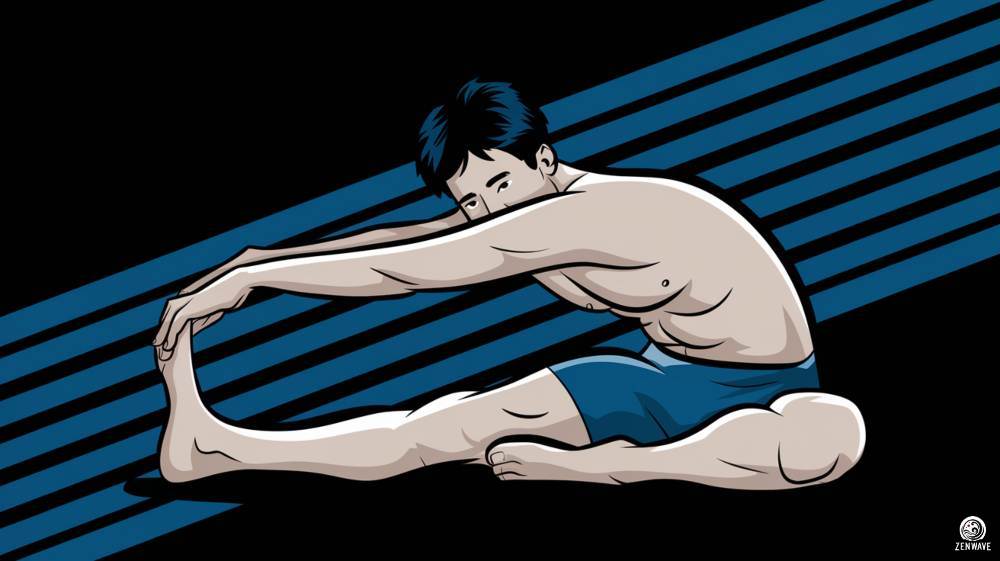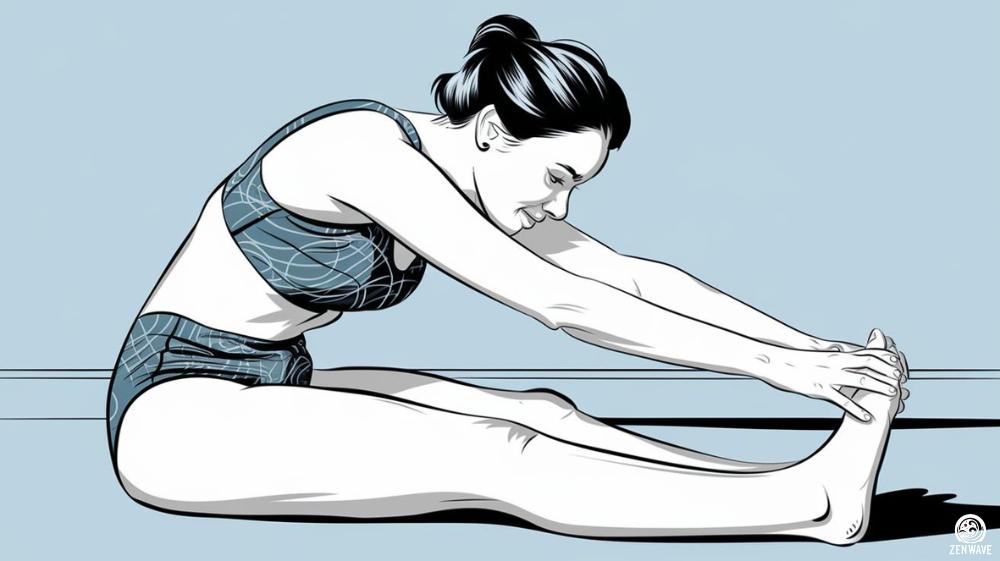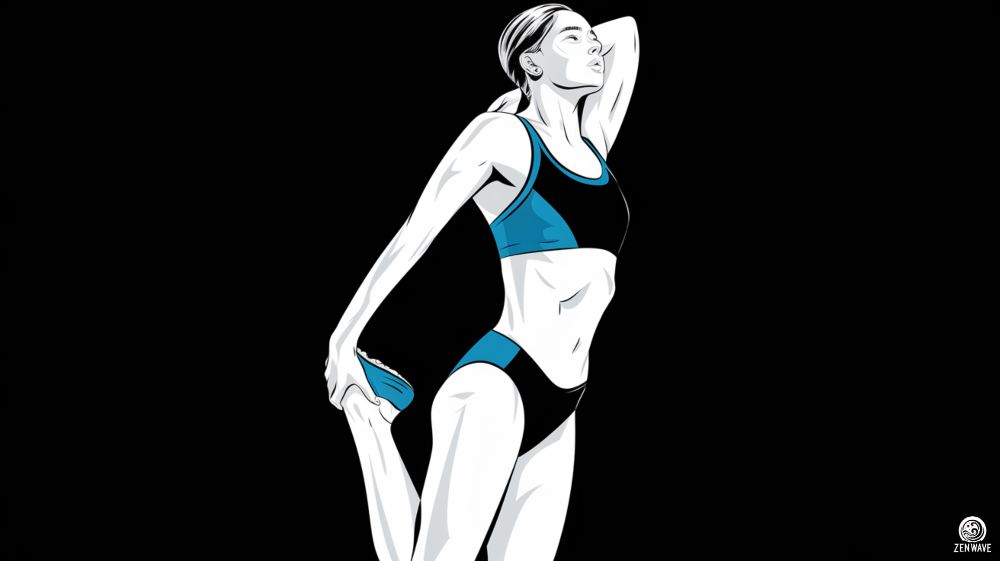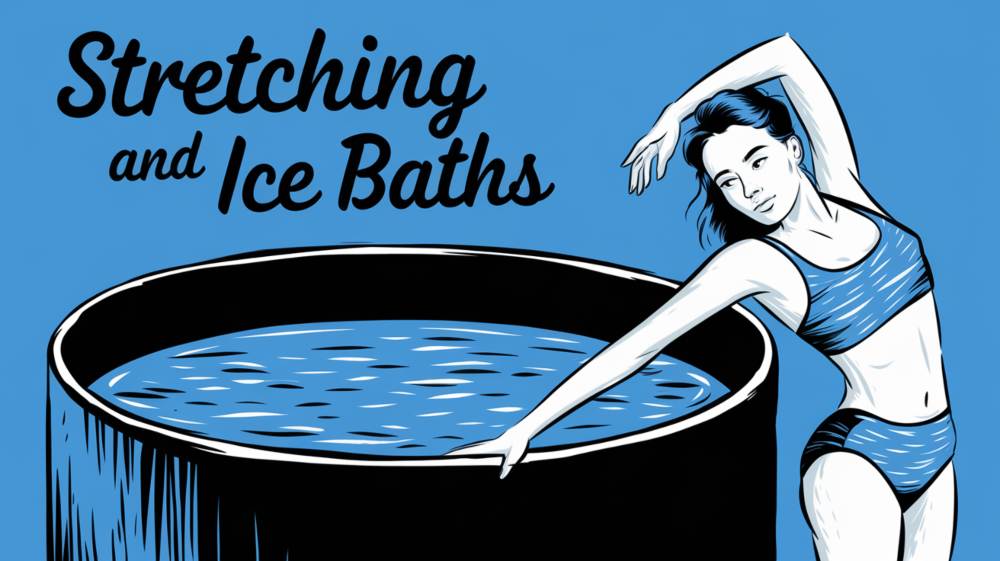In fitness or life in general, preparation and recovery are just as important as the work itself. Ice baths and stretching can help with but what about the timing?
Stretching before an ice can help prevent soreness and help with flexibility afterwards. Stretching after an ice bath can also help after the ice bath once you have properly warmed up but you don’t want to overstretch.
In this article, we’ll explore the benefits of stretching before and after an ice bath, and go over some good stretches to do to improve your ice bath routine.
Why Stretch Before An Ice Bath?

There are many benefits of ice baths, but let’s dive into dive into the benefits of stretching before you take the icy plunge. While it might seem counterintuitive to stretch when you’re about to get cold, there are actually some good reasons to do it:
1. Preparing muscles for cold exposure
Stretching before an ice bath increases blood flow, warming up your muscles and making them more pliable. This preparation helps your muscles adapt to the cold, minimizing stiffness and tightness.
2. Maintaining flexibility
Cold temperatures can reduce muscle flexibility by slowing nerve impulses and reducing blood flow. Stretching beforehand helps lengthen your muscles, allowing them to better withstand the cold and maintain their range of motion.
3. Reducing post-ice bath stiffness
Muscles naturally contract when exposed to cold to conserve heat, which can lead to stiffness, especially if your muscles are already tight. Stretching allows your muscles to relax, reducing excessive contraction in the cold and lowering your risk of stiffness afterwards.
Additionally, the improved circulation from stretching promotes muscle recovery by flushing out toxins and waste products, further reducing the risk of post-ice bath stiffness.
5 Stretches You Can Do Before an Ice Bath

So, what kind of stretches should you do before an ice bath? Focus on stretching the major muscle groups that you used during your workout, such as your legs, hips, and back. Hold each stretch for about 30 seconds and make sure to breathe deeply. And remember, never force a stretch beyond what feels comfortable.
When preparing for an ice bath, it’s essential to focus on stretching the major muscle groups that will be most affected by the cold. These typically include the legs, hips, and lower back. Here are some recommended stretches to perform before an ice bath, along with general instructions:
1. Seated Hamstring Stretch
- Sit on the floor with your legs extended in front of you.
- Reach for your toes, keeping your back straight and your head up.
- Hold the stretch for 15-30 seconds, then release.
- Repeat 2-3 times on each leg.
2. Standing Quadriceps Stretch
- Stand with your feet hip-width apart, holding onto a wall or chair for balance if needed.
- Bend one knee and bring your heel towards your buttocks.
- Grasp your ankle with your hand and gently pull your heel closer to your body.
- Hold the stretch for 15-30 seconds, then release.
- Repeat 2-3 times on each leg.
3. Pigeon Pose (Hip Stretch)
- Start on your hands and knees, with your hands shoulder-width apart and your knees hip-width apart.
- Bring your right knee forward, placing it behind your right wrist, with your ankle near your left hip.
- Extend your left leg back, keeping your hips square and your back straight.
- Gently lower your upper body towards the floor, supporting yourself with your arms.
- Hold the stretch for 15-30 seconds, then release.
- Repeat 2-3 times on each side.
4. Cat-Cow Stretch (Lower Back)
- Start on your hands and knees, with your hands shoulder-width apart and your knees hip-width apart.
- As you inhale, arch your back and look up towards the ceiling (Cow pose).
- As you exhale, round your back and tuck your chin to your chest (Cat pose).
- Repeat this sequence for 10-15 breaths.
5. Across-the-Chest Shoulder Stretch (Upper Body)
- Stand with your feet hip-width apart and your arms relaxed at your sides.
- Bring your right arm across your chest, keeping it straight.
- Use your left hand to gently pull your right arm closer to your chest, feeling the stretch in your right shoulder and upper back.
- Hold the stretch for 15-30 seconds, then release.
- Repeat 2-3 times on each side.
Remember to hold each stretch for 15-30 seconds and avoid bouncing or overstretching. Always feel your body and stretch within your comfort level. It’s important to warm up your muscles before stretching, so consider doing some light cardio before performing these stretches.
Benefits of Stretching After an Ice Bath

1. Restoring range of motion
After an ice bath, it’s crucial to allow your muscles to warm up gradually before stretching. Cold muscles are less pliable and more prone to injury. Once your muscles have warmed up, gentle stretching can help restore your range of motion and counteract any stiffness caused by the cold.
2. Promoting circulation and recovery
Light stretching after an ice bath, performed after an adequate warm-up period, can help promote blood flow to your muscles. This increased circulation aids in the recovery process by delivering oxygen and nutrients to your tissues while flushing out toxins and waste products. Better blood flow can also help reduce muscle soreness and speed up recovery time.
3. Relaxing tense muscles
The cold temperature of an ice bath can cause your muscles to tense up. After allowing your muscles to warm up, gentle stretching can help relax any tension or tightness. This relaxation can contribute to a more comfortable post-ice bath experience and may help prevent stiffness in the hours following your recovery session. Remember, when stretching after an ice bath, always prioritize a proper warm-up and avoid overstretching.
Looking for something else you can do to help prepare for an ice bath? Check out ways you can practice meditation for the ice bath.
Final Thoughts
ncorporating stretching into your ice bath routine can significantly improve your recovery process and overall well-being. Stretching before an ice bath can prepare your muscles for the cold, maintain flexibility, and reduce the risk of post-ice bath stiffness. Remember to focus on major muscle groups and hold each stretch for 15-30 seconds while avoiding overstretching.
After your ice bath, allow your muscles to gradually warm up before engaging in light stretching. This post-ice bath stretching can help restore range of motion, promote circulation and recovery, and relax tense muscles. Always prioritize a proper warm-up and listen to your body to prevent injury.
If you’re looking for a convenient and effective way to get ice baths into your recovery routine, check out our Zenwave Ice Pod. This innovative tub is designed specifically for cold therapy, offering a comfortable and efficient ice bath experience. With its compact size and easy-to-use features, the Zenwave Ice Pod is a great starting point for anyone interested in exploring the benefits of cold water immersion.
By combining regular stretching with ice bath therapy, you can take your recovery to the next level and optimize your overall performance. Remember to practice proper technique, and enjoy the rejuvenating benefits of this powerful recovery combination.

